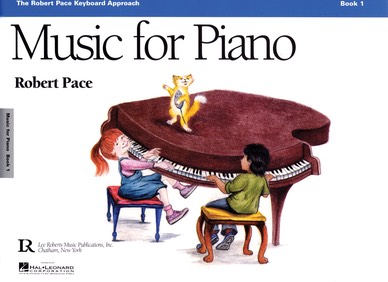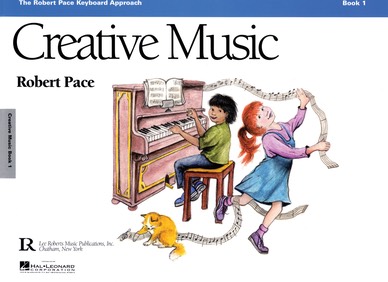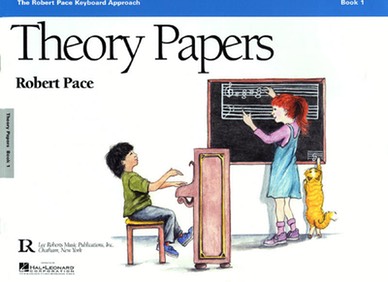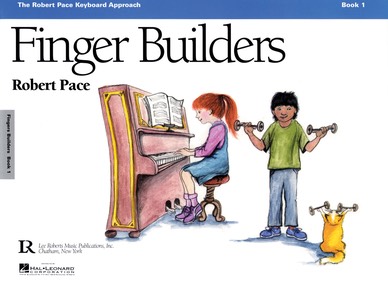1: Arts and Music in Contemporary Society
The first part of this paper will touch on questions regarding the place of the arts and music in contemporary society, while the second will present certain key philosophic and pedagogic aspects of the Robert Pace piano materials. The student demonstration which will follow is intended to show one teacher's individual interpretation and application of this approach to piano instruction.
NATIONAL CONFERENCE ON PIANO PEDAGOGY
Dr. Robert Pace
Position Paper: Madison, WI, October 1982
_________________
- Arts and Music in Contemporary Society
- Musicianship
- The Music for Piano Series
- Modes of Instruction & Teaching
I believe strongly that music and the arts should figure prominently in the broad education of our children, and that, in a real sense, music learning is learning essentially as it occurs in other subject matter areas. But until recently, we as a profession have failed to grasp the cognitive significance of the arts in general and music in particular as an important element in the curriculum. This is probably a critical factor in our faring so poorly in this time of retrenchment.
We must find some more persuasive answers to the questions "why music?" Too often at our conventions and conferences, we proceed as if the general public perceives music as basic to all humanity and that music instruction will of itself make us better human beings. On the contrary, most people actually conceive it as extra-curricular and a frill. Far too few of them have derived any lasting benefits from their early musical efforts.
So, why music? The old "art for art's sake" and "historical" rationales for the inclusion of music in the curriculum carry little weight in times of recession and high unemployment. When public school and college budgets are eroded by spiraling costs and declining enrollments, the real views of our decision makers on the value of music in relation to other subjects become painfully clear. Obviously, they cannot be convinced of the basic merits of music when they have so little positive data on which to base their judgments.
As indicated in my earlier remark some of us view music "thinking" or learning as cognition in much the same way we would view thinking and learning in the other subjects. Interesting as this is, even more exciting is the distinct possibility that music learning--as it oscillates within the combined affective, cognitive an psychomotor realms of human experience--may actually enhance the processes of learning in other areas. However, it is not within the scope of this paper to attempt to explore the ramifications of that theory but rather to focus on certain unique features of music learning which should be inherent in our teaching.
Since music is a "time art," in that performance takes place within a certain time-frame and cannot be stopped without being lost, it must be experienced "in motion." The cognitive- affective-psychomotor counterpoint which takes place when one is totally involved in the musical act is fascinating to consider as one probes the thought processes which occur during performance. For both performer and listener, it is experiencing, thinking and reacting in whatever fashion each is capable as one moves through that particular composition for those few moments of time.
To follow this further, not only do we respond "in motion" but there are many different musical sounds, patterns, combinations and changes happening almost simultaneously to which performer and listener must attend. For the performer, there is still another aspect to consider. As he or she thinks in motion and is dealing with the various changing combinations, there is also the important problem of projecting one's own feelings and musical ideas. One might ask, "How can I interpret the various musical symbols of the composer to express my own unique ideas rather than merely imitating someone else's performance or passively submitting to the teacher's instructions?"
Obviously, all of this does not begin to take pace at the advanced level of performance, but must be nurtured from the outset of instruction. It is critical for teachers to avoid the pitfalls of a product orientation to teaching. Such an approach may turn out students who play pieces with extreme technical accuracy and skill but who lack the necessary insights and learning processes to develop musical maturity and independence.
That esthetic experiences are "enrichments" of human life is a view widely accepted and rarely disputed, per se. Yet, as previously mentioned, there are missions of people in this country whose lives really have not been enriched as a result of music study. Too often students, after years of public school music, still are unable to read or perform even the simplest music. And there are those who have spent hours and hours of after-school practice time simply memorizing a piano piece for the spring recital. Probably very few of these individuals really feel that music has enriched their lives.
Yet, it is my hope that these aesthetic moments are well within reach of most people if only we could help each person get the proper balance of the cognitive (factual), affective (feeling) and psycho-motor (performance skills). And it is, indeed, a delicate balance of all three which avoids the problems of too much unrelated theory without application to performance; all technical with little musicianship; or an excess of emotion devoid of understanding appropriate styles of the various periods.
I have found the theories of developmental psychologists to be very useful in gaining insight into the general processes of learning which are applicable to music learning. The works of Piaget are particularly helpful in understanding early childhood conceptualization with the many implications for subsequent mental growth and development. By helping children understand their learning processes at each level, we enable them to achieve better performances (products).
© Copyright 1982. Robert Pace. Position Paper: Madison, WI, October 1982. National Conference On Piano Pedagogy. All Rights Reserved.




